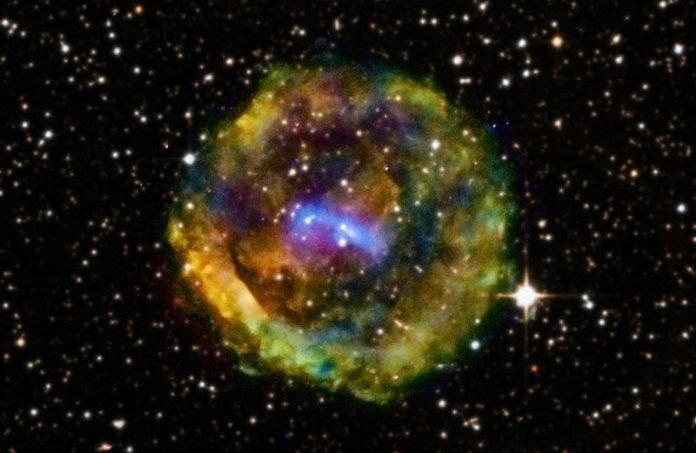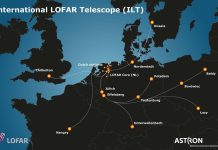
Any Neapolitan ice cream lover knows three flavors are better than one.
New research from Northwestern University has found that by studying all three “flavors” involved in a supernova, they’ve unlocked more clues as to how and why stars die.
Scientists look at neutrinos (subatomic particles) for critical information about supernova explosions.
While previous research identified three “flavors” of neutrinos, many researchers continued to simplify studies on the topic by studying “vanilla” while ignoring “chocolate” and “strawberry.”
By including all three flavors in the study, Northwestern researchers have developed a deeper knowledge of dying stars and begun to unravel existing hypotheses.
The study was published in the journal Physical Review Letters.
In a supernova explosion, 99% of the dead star’s energy is emitted through neutrinos.
Traveling almost at the speed of light and interacting extremely weakly with matter, neutrinos are the first messengers to reach the earth and indicate a star has died.
Since their initial discovery in the 1950s, particle physicists and astrophysicists have made important strides in understanding, detecting and creating neutrinos.
But to limit the complexity of models, many people studying subatomic particles make assumptions to simplify the research – for example, that non-electron neutrinos behave identically when they are propelled from a supernova.
Part of what makes studying neutrinos so complicated is they come from compact objects (the inside of a star) and then interact with one another, said senior author Manibrata Sen, a postdoctoral researcher currently based at Northwestern under the Network for Neutrinos, Nuclear Astrophysics and Symmetries program at University of California – Berkeley.
That means when one flavor is impacted, much like a melting tub of Neapolitan ice cream, its evolution is affected by all others in the system.
“You can’t create conditions to have neutrinos interacting with each other on Earth,” Sen said. “But in compact objects, you have a very high density of neutrinos. So now each neutrino is interacting with each other because there are so many around.”
As a result, when an enormous number of neutrinos are sent careening during the massive explosion of a core-collapse supernova, they begin to oscillate. Interactions between neutrinos change the properties and behaviors of the whole system, creating a coupled relationship.
Therefore, when neutrino density is high, a fraction of neutrinos interchange flavors. When different flavors are emitted in different directions deep within a star, conversions occur rapidly and are called “fast conversions.”
Interestingly, the research found that as the number of neutrinos grows, so do their conversion rates, regardless of mass.
In the study, the scientist created a non-linear simulation of a “fast conversion” when three neutrino flavors are present, where a fast conversion is marked by neutrinos interacting and changing flavors.
The researchers removed the assumption that the three flavors of neutrinos — muon, electron and tau neutrinos — have the same angular distribution, giving them each a different distribution.
A two-flavor setup of the same concept looks at electron neutrinos and “x” neutrinos, in which x can be either muon or tau neutrinos and where differences between the two are insignificant.
“We’ve shown that they actually are all relevant, and ignoring the presence of muons is not a good strategy,” Sen said. “By including them we show past results are incomplete, and results change drastically when you perform a three-flavor study.”
While the research could have major implications in both particle and astrophysics, even models used in this research included simplifications. The team hopes to make their results more generic by including spatial dimensions in addition to components of momentum and time.
In the meantime, Sen said he hopes his team’s research will help the community embrace more complexity in their studies.
“We are trying to convince the community that when you take these fast conversions into account, you have to use all three flavors to understand it,” he said. “A proper understanding of fast oscillations can actually hold the key to why some stars explode from supernovas.”
Sen led the research in collaboration with colleagues from the Max Planck Institute for Physics, Munich, and the Indian Institute of Technology, Guwahati.
The study, “Fast flavor conversions in supernovae: the rise of mu-tau neutrinos,” was supported by the National Science Foundation (award number PHY-1630782). It was also funded by the Heising-Simons Foundation (award number 2017-228).



